Socially, the Edwardian era was a period during which the British class system was very rigid. It is seen as the last period of the English country house. Economic and social changes created an environment in which there was more social mobility. Such changes included rising interest in socialism, attention to the plight of the poor and the status of women, including the issue of women’s suffrage, together with increased economic opportunities as a result of rapid industrialization. These changes were to be hastened in the aftermath of the first World War.
 Harrods ca. 1906
Harrods ca. 1906
Bertie grew to became a short, stout man with the same weak chin as his mother which he disguised with a beard. He was perhaps best known for a series of amorous liaisons, which his mother did not approve of. The most commonly known of his mistresses were Lily Langtry, Sarah Bernhardt and Alice Keppel. (Great grandmother of Camilla Parker-Bowles) Edward possessed an infectious gaiety and joie de vivre. He loved horse racing and the theatre.

In December 1861, the Prince Consort died from typhoid two weeks after visiting the Prince of Wales at Cambridge. The Queen, who was inconsolable and wore mourning for the rest of her life, blamed the Prince of Wales for his father's death. She regarded him as frivolous, indiscreet, and completely unsuitable to undertake any responsibility. As a result he was largely excluded from political power and was denied an active role in the running of the country. Edward was only allowed to represent the Queen at state occasions and gatherings, and thus he came to personify the fashionable, leisured elite. He became a leader of London society, spending his time, drinking, gambling, Horse racing and sailing.
 Alfred, Lord Tennyson, composed an ode in 1863 in honor of the Danish Princess,.
Alfred, Lord Tennyson, composed an ode in 1863 in honor of the Danish Princess,."A Welcome to Alexandra "
Sea-kings’ daughter from over the sea, Alexandra!
Saxon and Norman and Dane are we.
But all of us Danes in our welcome of thee, Alexandra!
Blissful bride of a blissful heir, Bride of the heir of the kings of the sea—
O joy to the people and joy to the throne, Come to us, love us, and make us your own:
For Saxon or Dane or Norman we, Teuton or Celt, or whatever we be,
We are each all Dane in our welcome of thee, Alexandra!

Shortly after the Prince Consort's death, Queen Victoria arranged for her son to marry Princess Alexandra of Denmark, the stunningly beautiful elder daughter of King Christian IX of Denmark and his wife, the former Princess Louise of Hesse-Cassel. Alix, as she was affectionately called by her family, was selected as a suitable bride for the Prince of Wales and vetted by Queen Victoria. On meeting her for the first time Bertie wrote back to his mother "I can now candidly say that I thought her charming and very pretty." Alexandra arrived in London in March 1863, her arrival and the rapturous welcome she received from the British public, went some way to lift the "Royal Gloom " that hung over Windsor Castle, after Albert’s untimely death.

Godeys Fashion embroidery ca. 1863
The Danish Princess was far more popular and cheered more loudly than the Prince of Wales..... a pattern that was to reoccur decades later when Diana married another Prince of Wales in another era.
Bertie and Alix, as Princess Alexandra was familiarly known, became leaders of the British society life that made them popular and re-established the prestige the monarchy had lost because of the Queen's seclusion.

18-1/4" Jumeau fashion, size 4, with a lovely pale bisque head, exquisite spiral threaded pale blue glass eyes in extra-large eye-cuts, pierced ears with pearl earrings, and a pretty mohair wig in a lovely shade of strawberry blonde.On the classic, gusseted French leather body with individually stitched and wired fingers theblushing bride is dressed to the nines in a classic, trained, cream brocade wedding ensemble, complete with a bouquet and tulle veil. Lovely floral accents are scattered upon the dress.
 Prince Albert and Princess Alexandra were married in 1863, in St George’s Chapel Windsor and “Alix”, as she was called in the family, began her very long role (1863-1901) as Princess of Wales. With her grace and charm she was feted and cheered wherever she went and almost effortlessly became a leader of fashion and society.
Prince Albert and Princess Alexandra were married in 1863, in St George’s Chapel Windsor and “Alix”, as she was called in the family, began her very long role (1863-1901) as Princess of Wales. With her grace and charm she was feted and cheered wherever she went and almost effortlessly became a leader of fashion and society.

Gaudinot-Popineau. … Details include cobalt glass eyes in large eye cuts, delicate painting including beautifully blushed cheeks, and her marvelous original deep brunette human hair wig worn in an elegant style.On a sturdy leather body and with the original pink tint visible mostly on the torso, she wears a lovely two-piece ensemble of cream satin with monochromatic detailing in the way of fine lace and bows. Antique leather boots and fine underthings complete the presentation of this cabinet ready doll.
Soon children began to arrive for the Wales couple; The first child, Albert Victor Christian Edward known to the family as Eddy was born in 1864. A year and a half later, on June 3, 1865, another boy was born to the Prince and Princess of Wales, this time at Marlborough House. The boy was named George. He was followed by three daughters: Louise, on February 20, 1867, Victoria on June 6 1868 and Maud, on November 26, 1869. Bertie and Alix adored and spoiled their children, which greatly displeased the Queen. Any effort was not enough to please the Wales children and to make them happy

A Portrait Jumeau fashion from the Pierre Jumeau era, who stands an impressive twenty-one inches tall. Classic Jumeau features include a perfect bisque head and shoulderplate – the head with "dewy-bisque" and exquisite coloring, cobalt blue glass eyes with threading, pierced-through ears, and even her original wig in blonde mohair, that is styled in a lovely chignon.On a commercially made cloth body, she is one of the unusual models that is fitted with arms that terminate in china "Kintzbach hands" referring to the body style which was patented in 1869 by American, Martin Kintzbach. Lillie Bell is certainly wealthy when it comes to clothing and accessories. Her trousseau includes a selection of fashions and accessories that any lady would envy. Lillie Bell comes with things that tell us she was deeply loved.

 During this period, Alexandra was strongly overshadowed by her mother-in-law, Victoria, the Queen of England. Alexandra seems to have been closer and more familiar with her children and her servants than was typical in the highest English social circles, and this may have resulted in some friction between the Queen and her daughter-in-law.
During this period, Alexandra was strongly overshadowed by her mother-in-law, Victoria, the Queen of England. Alexandra seems to have been closer and more familiar with her children and her servants than was typical in the highest English social circles, and this may have resulted in some friction between the Queen and her daughter-in-law.(future George VI), and Queen Victoria.
Standing: Prince George, (future George V), and Edward Albert, Prince of Wales. (Future Edward VII)
Film was in its early days and audiences preferred live performances to picture shows. Music Halls were very popular and widespread. The theatre was marked by the rise of the New Drama, or plays by George Bernard Shaw.
Considered one of the very first music halls, the Canterbury Hall – as it was originally called – was built in 1852 by Charles Morton in Lambeth. It proved so successful that he was able to replace it in 1854 and called it Canterbury Music Hall, seating about 1500 people.
Famous people who frequented the building were: The Prince of Wales (later King Edward VII), Duke of Cambridge, and the Duke and Duchess of Teck. Charlie Chaplin had performed there, and also had mentioned seeing his father perform there.
Famous people who frequented the building were: The Prince of Wales (later King Edward VII), Duke of Cambridge, and the Duke and Duchess of Teck. Charlie Chaplin had performed there, and also had mentioned seeing his father perform there.
 He also smoked thirteen large cigars and twenty-two cigarettes a day and had an insatiable appetite, but he was good natured and easy going with a ready smile. He was affable and approachable in a way that his mother never was.
He also smoked thirteen large cigars and twenty-two cigarettes a day and had an insatiable appetite, but he was good natured and easy going with a ready smile. He was affable and approachable in a way that his mother never was.  In 1882, their two eldest sons, Jack the Ripper suspect, and Duke of Clarence Albert Victor and Prince George Frederick Ernest Albert (later King George V), who were serving as midshipmen on HMS Bacchante
In 1882, their two eldest sons, Jack the Ripper suspect, and Duke of Clarence Albert Victor and Prince George Frederick Ernest Albert (later King George V), who were serving as midshipmen on HMS Bacchante Two Royal brothers "Albert Victor, and George"
Two Royal brothers "Albert Victor, and George"During the birth of her third child in 1867, the added complication of a bout of rheumatic fever threatened Alexandra's life, leaving her with a permanent limp. Biographers agree that their marriage was in many ways a happy one; however, some have asserted that Albert Edward did not give his wife as much attention as she would have liked and that they gradually became estranged, until his attack of typhoid fever (the disease which was believed to have killed his father) in late 1871 brought about a reconciliation. Nevertheless, Edward was severely criticized from many quarters of society for his apparent lack of interest in her very serious illness, and for continuing throughout their marriage, to keep company with other women,
A classically beautiful Jumeau Parisienne is a wonderful thing, indeed.Measuring eighteen inches tall, this early Jumeau, in desirable size 4, possesses a perfect bisque shoulderplate attached to a perfect swivel head with exquisite painting and pale coloring, mesmerizing pale gray eyes, pierced-through ears and a marvelous light brown mohair wig.On a desirable articulated wooden body with the original finish, (some flaking to lower legs) it allows countless poses!The marvelous two-piece ensemble the doll is wearing reminds us of an adult size costume, re-created in miniature, due to its styling and exceptional detail. Crisp antique under things and artist-created leather ankle boots complete her presentation.
Victoria, true to the Hanoverian name, saw the worst in Edward. She and Albert imposed a strict regime upon Edward, who proved resistant and resentful throughout his youth. His marriage at age twenty-two to Alexandra afforded him some relief from his mother's domination, but even after Albert's death in 1863, Victoria consistently denied her son any official governmental role. Edward rebelled by completely indulging himself in women, food, drink, gambling, sport and travel. Alexandra turned a blind eye to his extramarital activities, which continued well into his sixties and found him implicated in several divorce cases.


















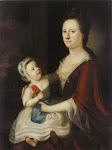

























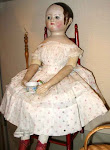.jpg)









































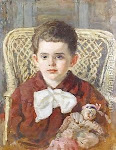





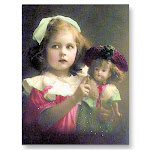










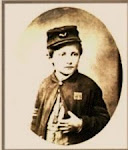








.jpg)































 Parian nurse maid and child; doll house dolls ca. 1880
Parian nurse maid and child; doll house dolls ca. 1880



